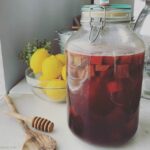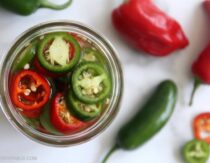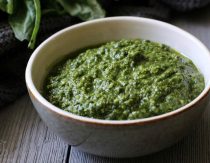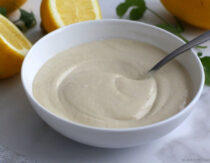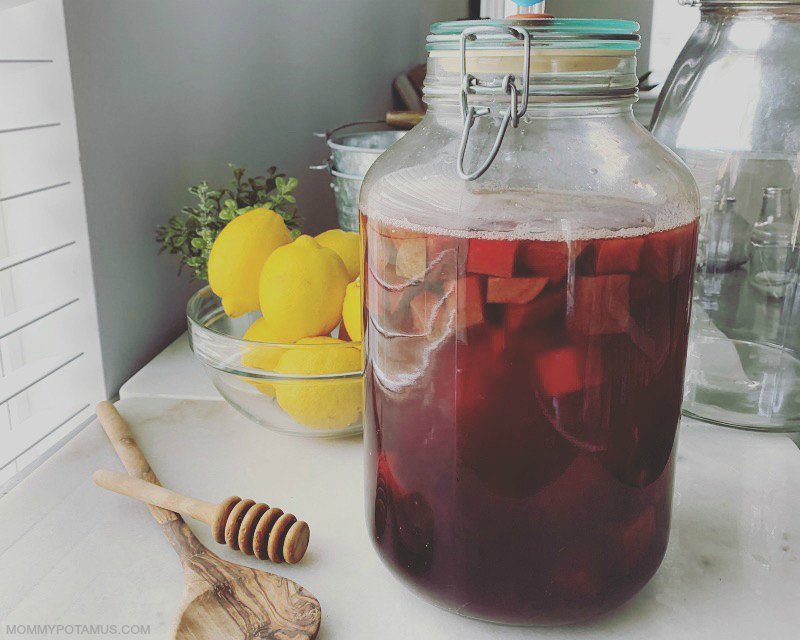
I love beets like I love email spam. Which is to say I don’t. There are some exceptions, though – I adore the salty, crunchy goodness of these rosemary beet chips, and at least a few times a year I crave the unmistakable, earthy tang of this beet kvass recipe.
Ruby red and rich in gut-friendly probiotics, beet kvass has long been revered in Russia as a blood tonic, liver cleanser and digestive aid. It’s usually made from rye, but can also be made from cherries, lemons, and perhaps most nourishing of all – beets.
Kvass is so woven into Russian folklore that it makes an appearance in War and Peace, where “Tolstoy describes how Russian soldiers took a ladle full of kvass before venturing from their barracks onto the Moscow streets during a cholera epidemic.” (1)
Why is kvass so revered? Let’s take a closer look . . .
Health Benefits of Beet Kvass
Beets are a good source of folate, vitamin C, potassium, magnesium, iron, manganese and phytonutrients such as betains, which have been “shown to provide antioxidant, anti-inflammatory, and detoxification support.” (2)
Research suggests that they:
- have positive effects on blood pressure (3)
- support a healthy immune system (4)
- have protective effects on the liver (5)
- support the ability of your body to replenish oxygen during exercise (6)
But of course, those are just the details on plain ole beets. While cooking them damages vitamin C and some other beneficial components, making them into kvass via fermentation makes many nutrients more bioavailable . . . and even adds some additional ones! (7)
And of course fermentation introduces beneficial bacteria, which further improve the nutrient profile by producing B-vitamins. (8)
Like sauerkraut, ginger ale, or kimchi, beet kvass rich in gut-friendly probiotics thanks to the process of lacto-fermentation. Basically, that’s when beneficial bacteria (lacto is for lactobacillus) are used to extend the shelf life (aka preserve) of veggies and herbs by inhibiting the growth of harmful bacteria.
The process works like this:
Veggies + Clean Glass Jar + Salt Water = Fermentation Magic
Here’s why: Lactobacillus are tolerant to salt while the bad guys can’t take much of it, so when we put veggies, salt, and water in a jar, the beneficial bacteria that naturally occur in veggies consume some of the carbs and convert them to lactic acid.
Lactic acid is what gives fermented foods their delicious tangy flavor, and because it also inhibits other organisms it’s one of the primary methods people have used to preserve food for generations.
As a bonus, fermenting increases the nutritional profile of foods by increasing the enzyme content and breaking down digestion inhibitors (oxalates and phytates) so that nutrients are more bioavailable. (1)
And of course fermentation introduces beneficial bacteria, which further improve the nutrient profile by producing B-vitamins. (8)
Now, you may be thinking, “That all sounds great, but . . .”
So, what does it taste like?
Good question! If you’ve tried kvass before, you may have noticed that it can be very salty – this one isn’t.
Since most of us are pretty new to fermentation, we tend to use a lot of salt to keep unwanted microbes at bay while the beneficial bacteria gets established. This approach can make some ferments very unappetizing, and I avoided kvass for years for this reason.
Fortunately, a book I picked up a couple of years ago, Fermented, uses less salt than other recipes . . . only 1/2- 1 teaspoon per quart. Seeing a lower salt ratio recommended by a fermentation expert gave me the courage to begin experimenting with lower ratios as well, and my batches have turned out beautifully – tangy and robust without being too salty.
Part of the reason for my success may be that I use a fermenting jar with an airlock, which helps protect the kvass from mold and yeast from the environment. However, I have friends that ferment with tightly closed jars and get good results, too.
This version is infused with ginger, which adds a pleasant flavor and also supports digestion. Feel free to experiment with other flavorings like citrus peels, bits of dried pineapple – whatever you like!
Oh and quick tip: If you’re ever inspired to dye Easter eggs, kvass creates a gorgeous purple color . . .
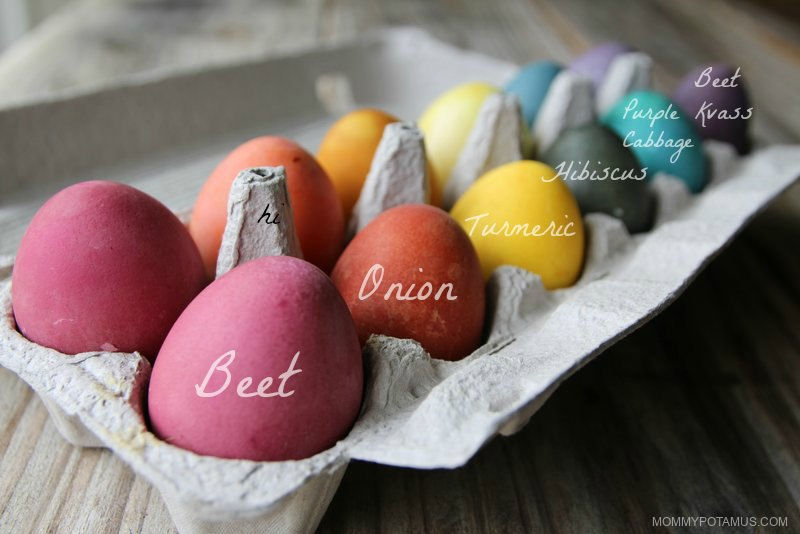
Ginger Beet Kvass Recipe
Equipment
- 1½ quart jar with airlock OR a 1½ quart jar with tight fitting lid
- wooden or plastic spoon
Ingredients
- 2 cups beets (rinsed and roughly chopped – no need to peel)
- 2 tbsp fresh ginger (rinsed and roughly chopped – again, no need to peel. see what I mean about how easy this is?)
- 4 cups filtered or spring water (chlorinated tap water inhibits fermentation)
- 2 tsp unrefined sea salt
Instructions
- Thoroughly wash and dry your jar and lid before getting started. If you don't have a jar with an airlock, see the notes section for using a regular jar.
- Place beets, ginger salt and water in jar. Stir with a wooden/plastic spoon until the salt is dissolved.
- Close the jar and attach the airlock. Add water to seal it. (If you’re new to airlocks, I’ve included a tutorial below.)
- Ferment at room temperature in a dark area. I usually place mine in a cabinet or wrap it in a towel.
- Allow the kvass to ferment for 3 days – two weeks. If I’m not in a rush I ferment mine for two weeks.
- When the kvass is ready, strain the beets and set them aside. Pour the liquid into a clean jar with a tight fitting lid or swing top bottles and refrigerate until you're ready to use it.
Notes
Nutrition
How To Set Up An Airlock
When I first starting fermenting, any mention of using an airlock immediately took my mind to space shuttles and astronaut suits. I thought it sounded way too complicated, but it’s actually super simple. Though the mechanisms vary slightly, here’s how I use mine.
Fill your jar with kvass ingredients, then using a twisting motion, push the main airlock piece into the top of the jar . . .
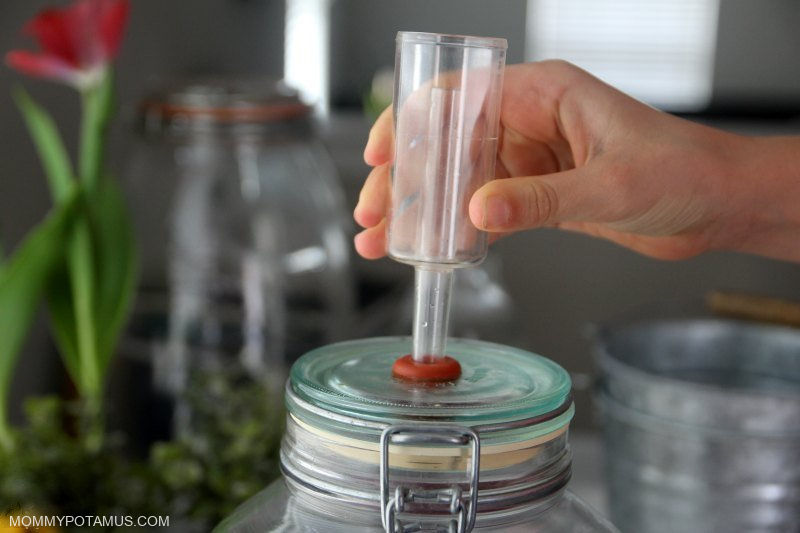
Add in the middle piece . . .
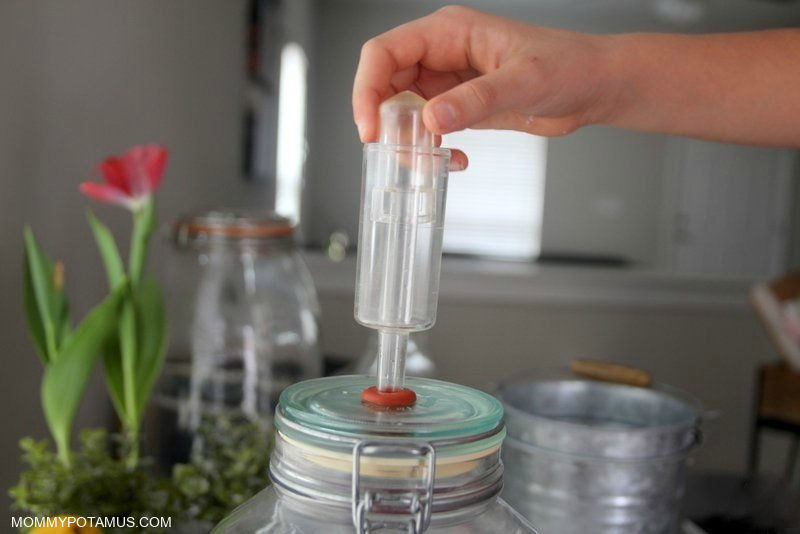
And then pour in enough water to bring the middle piece to the top of the airlock.
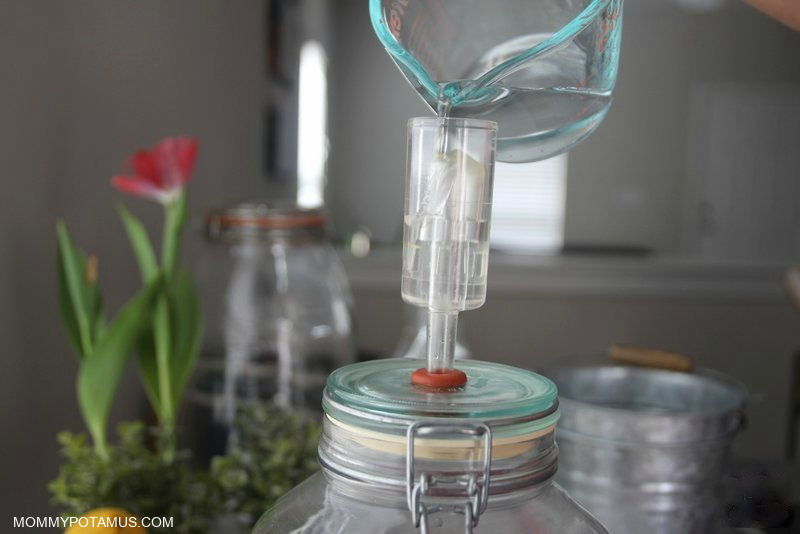
You will notice that the middle piece floats like a buoy at this point. I’ll explain more about why that’s important in the next section.
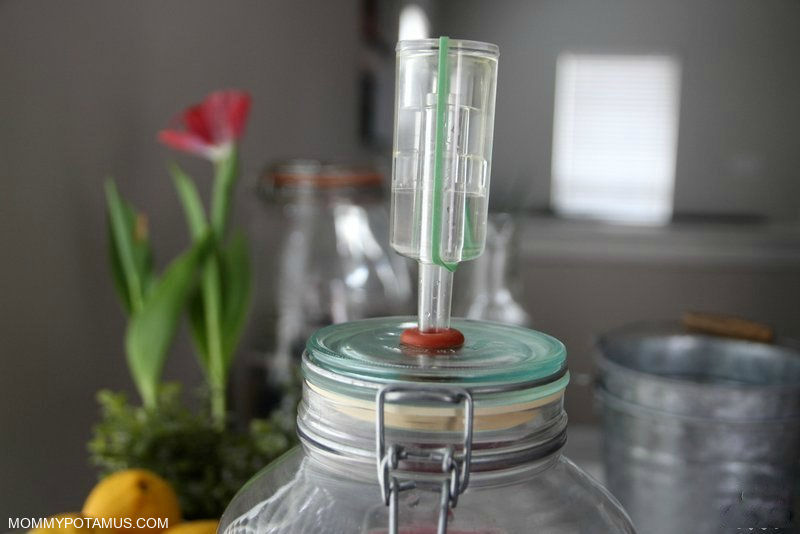
The last step to setting up your airlock is to place the lid on top. When excess pressure comes up through the stem (base) of the airlock, it builds under the buoy, which eventually bobs a little and allows the pressure to release through the lid, which has holes in it. All of this is done while the water seal stays intact, which prevents outside bacteria and yeast from reaching the ferment.
I, uh, lost my lid, so I secure the buoy in place with a rubber band.
Depending on how long you ferment you may need to add additional water to compensate for evaporation, but overall it’s very easy.
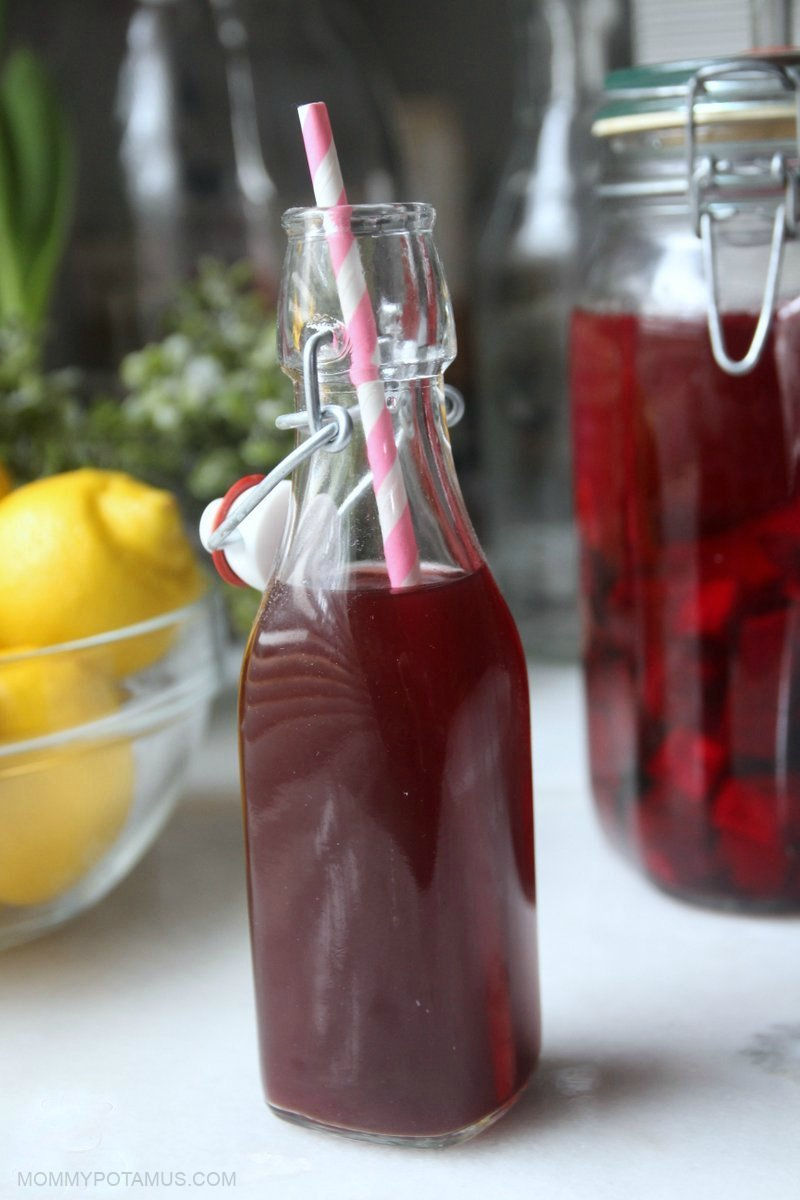
Want more research-backed natural remedies?
No problem, I’ve created a free ebook for you – Kitchen Apothecary: 25+ Natural Remedies Using Ingredients From Your Pantry – as a gift for signing up for my newsletter. You’ll also get updates when I post about safe essential oils for pregnant/breastfeeding mamas, exclusive gifts and coupons (I was able to give away a jar of free coconut oil to anyone who wanted it recently!), plus other goodies.
Sign up using the form below.
Sources
- The Weston A. Price Foundation. Kvass and Kombucha: Gifts From Russia
- The World’s Healthiest Foods. Beets
- Webb, AJ et. al. Acute blood pressure lowering, vasoprotective, and antiplatelet properties of dietary nitrate via bioconversion to nitrite
- Prahoveanu, E. et. al. Prophylactic effect of a Beta vulgaris extract on experimental influenza infection in mice
- Krajka-Kuzniak V et. al. Beetroot juice protects against N-nitrosodiethylamine-induced liver injury in rats
- Breese, BC et. al. Beetroot juice supplementation speeds O2 uptake kinetics and improves exercise tolerance during severe-intensity exercise initiated from an elevated metabolic rate
- Lu, X et. al. Radioprotective activity of betalains from red beets in mice exposed to gamma irradiation
- Hotz, Christine et. al. Traditional Food-Processing and Preparation Practices to Enhance the Bioavailability of Micronutrients in Plant-Based Diets
- Liem, IT et. al. Production of vitamin B-12 in tempeh, a fermented soybean food

